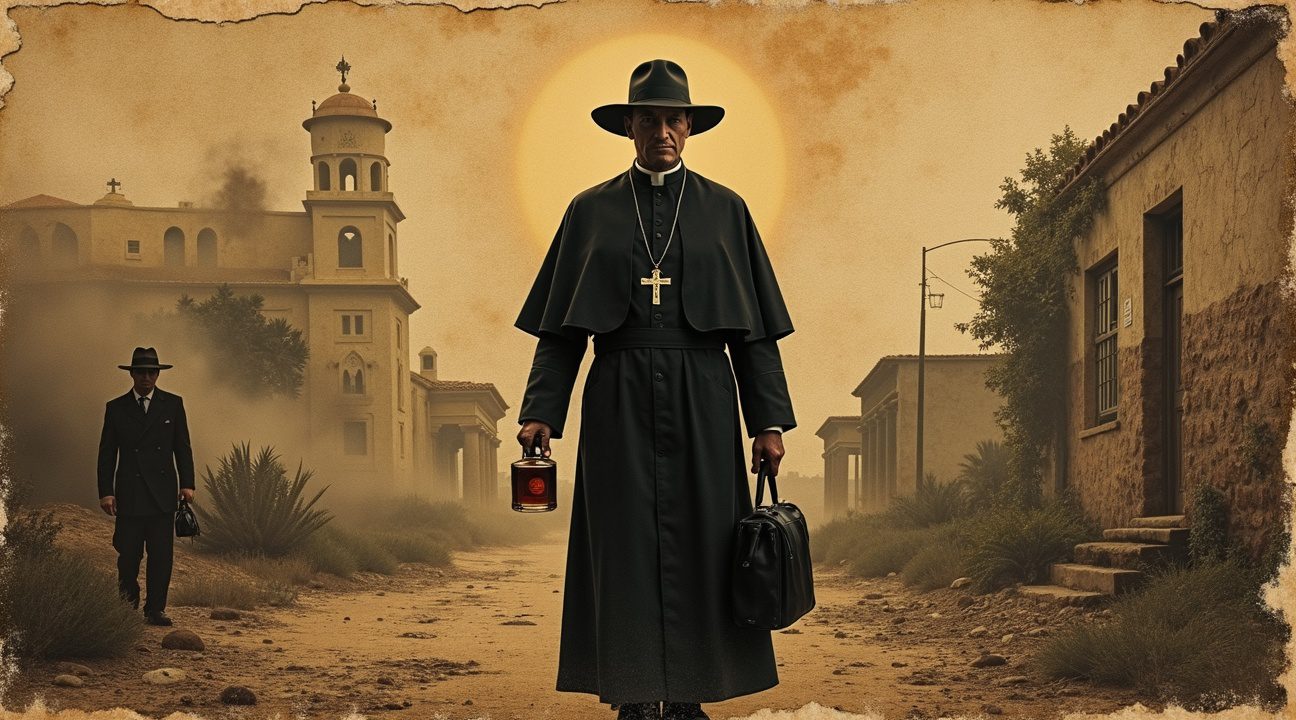Graham Greene, the celebrated British novelist, passed away on April 3, 1991, at the age of 86 in Vevey, Switzerland, after battling leukemia, marking the end of a literary legacy that spanned nearly seventy years.
Key Takeaways
- Greene died of leukemia at La Providence Hospital in Vevey, Switzerland, and was laid to rest in the cemetery of Corseaux.
- He divided his books into two categories: serious Catholic novels that wrestled with themes of faith and morality, and “entertainments” — eloquent thrillers often dealing with espionage and intrigue.
- His most notable works include The Power and the Glory (which earned the 1941 Hawthornden Prize), Brighton Rock, The Heart of the Matter (winner of the 1948 James Tait Black Memorial Prize), and The End of the Affair.
- Greene’s tenure with British intelligence in World War II, particularly in Africa, provided real-world experience that enriched the political and psychological realism of his novels.
- Although he never won the Nobel Prize, he was nominated several times and earned other major honors such as the Shakespeare Prize in 1968 and the Jerusalem Prize in 1981, reflecting his enduring impact on 20th-century literature.
Learn More About Graham Greene
For readers interested in exploring more about Greene’s life and contributions to literature, the Encyclopedia Britannica entry on Graham Greene offers an in-depth biography and literary overview.
Literary Giant Dies at 86 in Swiss Hospital
Graham Greene drew his final breath on April 3, 1991, at La Providence Hospital in Vevey, Switzerland. The celebrated author was 86 years old when leukemia claimed his life, bringing to a close one of literature’s most distinguished careers.
Born on October 2, 1904, in Berkhamsted, Hertfordshire, England, Greene had lived a life that spanned nearly nine decades of extraordinary literary achievement. His journey from a small English town to international acclaim exemplified the transformative power of storytelling and dedication to craft.
The author’s final resting place became the Corseaux cemetery in Switzerland, where he remains buried. This location reflects his later years spent in the tranquil Swiss countryside, far from the political upheavals and exotic locations that had inspired much of his fiction.
A Legacy of Love and Literature
Greene left behind two significant women who had shaped his personal life. His wife, Vivien Dayrell-Browning, stood by him through decades of marriage, while his companion Yvonne Cloetta provided inspiration during his later years. I find it particularly touching that Greene dedicated his final novel to Cloetta, demonstrating how personal relationships continued to influence his work until the very end.
His literary output represents an astounding achievement that few authors can match. Over the course of 67 years, Greene produced more than 25 novels, each one contributing to his reputation as a master storyteller. This prolific career mirrors the dedication shown by other literary figures who’ve passed on, much like how Tony Ganios passed away having left his own mark in entertainment.
Greene’s death marked the end of an era in English literature. His novels had explored themes of moral ambiguity, political conflict, and human frailty with a precision that earned him critical acclaim worldwide. The consistency of his output over nearly seven decades speaks to an unwavering commitment to his craft that remained strong even as age advanced.
The Swiss hospital setting of his final days provides a fitting backdrop for a man who had spent his career examining the human condition across continents. From the political tensions of Africa to the spiritual struggles of Mexico, Greene had traveled extensively to research his novels, always seeking authentic experiences to inform his writing.
Master of Catholic Fiction and Espionage Thrillers
Greene distinguished his literary output into two distinct categories that would define his career: profound Catholic novels exploring faith and morality, alongside what he called “entertainments” – sophisticated thrillers that captivated readers worldwide. This deliberate categorization allowed him to explore both the spiritual depths of human nature and the exciting terrain of espionage and crime.
Award-Winning Catholic Literature
The Power and the Glory stands as Greene’s masterpiece in Catholic fiction, earning the 1941 Hawthornden Prize and establishing itself as one of the 20th century’s greatest Catholic novels. Published in 1940, this work examines the struggle between faith and human weakness through the story of a whisky priest in revolutionary Mexico. Brighton Rock followed earlier in 1938, brilliantly weaving criminal underworld themes with profound moral complexity that impressed both critics and audiences. The novel’s enduring appeal led to film adaptations in both 1947 and 2010.
Greene’s experiences as a secret agent in Sierra Leone directly influenced The Heart of the Matter in 1948, which earned him the James Tait Black Memorial Prize. This novel continues his exploration of Catholic themes while drawing from his wartime intelligence work. The End of the Affair, published in 1951, represents another pinnacle of his Catholic fiction, masterfully examining the intricate relationships between faith, love, and betrayal through characters wrestling with divine intervention.
His “entertainments” proved equally compelling and commercially successful.
- Our Man in Havana, published in 1958, demonstrates Greene’s satirical genius applied to spy fiction, later transformed into a film by director Carol Reed.
- The Quiet American from 1955 showcases his ability to set morally complex protagonists against politically turbulent backdrops.
- He perfected this technique in later works like The Comedians (1966) and The Honorary Consul (1973).
Greene’s influence extended beyond novels into cinema, most notably through his screenplay for The Third Man in 1949, another collaboration with Carol Reed. This work exemplifies how his literary sensibilities translated seamlessly to film, creating lasting impact across multiple artistic mediums. His passing marks the end of an era that produced works comparable to other literary giants we’ve lost in recent years, leaving behind a rich legacy that continues influencing writers and readers alike.
https://www.youtube.com/watch?v=tSKceyuuvVU

Exploring Moral Ambiguity Across Global Hotspots
Greene’s literary genius lay in his ability to transport readers into the most volatile corners of the world, where political upheaval served as the perfect backdrop for examining the human soul’s darkest recesses. I find his choice of settings—Mexico during the Cristero War, colonial Africa, war-torn Southeast Asia, revolutionary Cuba, and the political chaos of Haiti and South America—wasn’t merely geographic diversity but a deliberate strategy to expose universal truths about human nature under extreme pressure.
Faith and Doubt in Foreign Landscapes
Converting to Catholicism in 1926 profoundly shaped Greene’s worldview, yet his novels never offered simple religious answers to complex moral questions. His characters grapple with sin and redemption while surrounded by the decay of colonial empires and emerging political movements. I observe how Greene’s protagonists often find themselves caught between their faith and the harsh realities of political conflict, creating tension that drives his most compelling narratives.
The psychological depth Greene achieved through this exploration of religious doubt distinguished him from his contemporaries. His characters don’t simply face external enemies; they battle internal demons that reflect broader human anxieties about purpose, meaning, and moral responsibility. William Golding’s assessment of Greene as a chronicler of twentieth-century consciousness captures this perfectly—Greene documented not just political events but the psychological impact of living through an era of unprecedented global conflict.
Characters Trapped in Moral Crises
Greene’s protagonists consistently find themselves in situations where traditional moral guidelines offer little guidance. I notice how his characters often experience self-doubt that mirrors the political uncertainty of their surroundings. These individuals aren’t clear-cut heroes or villains; they’re flawed human beings making impossible choices in impossible circumstances.
The author’s psychological realism stems from his understanding that moral ambiguity isn’t an abstract philosophical concept but a lived experience for people caught in political turmoil. His characters face decisions where every option carries moral weight, reflecting the complex nature of human conscience when confronted with survival, loyalty, and competing ethical demands.
Greene’s exploration of exile—both physical and spiritual—resonates throughout his work. His protagonists often feel disconnected from their home countries, their faith, and sometimes their own moral certainties. This sense of displacement amplifies the psychological tension that makes his novels so compelling, as characters must navigate unfamiliar territories both geographically and morally.
The political hotspots Greene chose weren’t random selections but carefully considered environments where societal structures had broken down or were under extreme stress. I see how these settings allowed him to examine what happens to individual morality when social norms collapse. His characters must create their own moral frameworks while dealing with immediate threats to their survival and the survival of others.
Greene’s treatment of political conflict avoids simple ideological positions, instead focusing on how ordinary people respond to extraordinary circumstances. His novels demonstrate that political upheaval doesn’t just change governments; it transforms individuals, often in ways they never anticipated. The psychological realism he achieved through this approach influenced countless writers who followed, establishing a template for literary fiction that combines political awareness with deep character development.
Through these global settings and morally complex characters, Greene created a body of work that speaks to fundamental questions about human nature. His ability to find universal themes in specific historical moments explains why his novels remain relevant decades after their publication. The anxiety and consciousness that Golding recognized in Greene’s work continues to resonate with readers who face their own moral crises in an increasingly complex world.
Notable figures from entertainment who’ve faced similar public scrutiny include Olivia Newton-John and Coolio, demonstrating how personal struggles play out on public stages.
Adventures of a Writer-Spy
Graham Greene’s life read like one of his own thrilling novels, filled with danger, intrigue, and psychological complexity. His career spanned multiple disciplines, from journalism to film criticism, but it was his covert work for the British Foreign Office during World War II that truly shaped his perspective as a writer. Greene undertook dangerous assignments across Africa, gathering intelligence while observing the human condition in some of the world’s most volatile regions.
A Life of Risk and Travel
Greene’s extensive travels through politically unstable territories weren’t merely adventurous pursuits—they became the foundation for his most compelling narratives. I find it fascinating how he transformed his experiences in war-torn countries into literary gold, creating authentic backdrops that resonated with readers worldwide. His assignments took him to places where political upheaval and moral ambiguity intersected, providing him with firsthand knowledge of how ordinary people behaved under extraordinary pressure.
The author’s personal struggles added another layer of depth to his work. Early in life, Greene attempted suicide, a dark period that would haunt him throughout his career. During his time at Oxford, he briefly joined the Communist Party—a decision that later resulted in the United States labeling him a prohibited immigrant. This political association created lasting complications for Greene, affecting his ability to travel freely and adding to his sense of being an outsider.
The Psychology Behind the Stories
Greene battled depression and existential despair throughout his life, psychological struggles that profoundly influenced both the settings and themes of his novels. I believe these internal conflicts gave his characters an authenticity that purely fictional creations often lack. His protagonists frequently grappled with moral dilemmas, guilt, and spiritual crises—reflections of his own mental state.
The combination of his espionage work and personal demons created a unique literary voice. Greene understood betrayal, loneliness, and the weight of secrets because he lived with them daily. His time in Africa during wartime exposed him to colonial tensions and cultural conflicts that later appeared in works like The Heart of the Matter and A Burnt-Out Case.
Much like other artists who faced personal struggles, including Olivia Newton-John and Coolio, Greene channeled his pain into creative expression. His depression didn’t diminish his productivity; instead, it fueled his exploration of human nature’s darker aspects.
Greene’s status as a prohibited immigrant in the United States stemmed from his brief communist affiliation, but this restriction ironically enhanced his perspective as an observer of American foreign policy. Being denied entry to certain countries forced him to view political situations from the outside, often providing clearer insights than those available to insiders.
His work as a film critic also influenced his writing style. Greene understood visual storytelling and pacing, skills that translated into his novels’ cinematic quality. Many of his books were later adapted for film, partly because they already contained strong visual elements and dramatic tension.
The writer-spy’s adventures weren’t limited to his official duties. Greene often placed himself in dangerous situations voluntarily, seeking experiences that would inform his work. He traveled to French Indochina during the conflict there, ventured into revolutionary Cuba, and explored various African nations during periods of political instability.
These experiences, combined with his psychological battles, created a writer who understood both external and internal conflicts. Greene’s characters often faced impossible choices between loyalty and survival, love and duty, faith and doubt. His personal struggles with depression and suicidal thoughts gave him insight into characters pushed to their breaking points.
Like other celebrities who struggled with personal demons, including Leslie Jordan and Aaron Carter, Greene found ways to transform his pain into artistic achievement. His adventures as both writer and spy created a unique literary legacy that continues to influence authors and readers decades after his death.
Enduring Literary Legacy and Critical Acclaim
Graham Greene stands as one of the most significant novelists of the 20th century, masterfully bridging the gap between literary sophistication and popular appeal. His unique ability to craft compelling narratives while addressing profound moral questions earned him recognition from both critics and readers worldwide.
Awards and Recognition
Greene’s exceptional talent garnered numerous prestigious honors throughout his career. The literary community recognized his contributions with several major awards:
- The 1941 Hawthornden Prize for outstanding literary achievement
- The 1948 James Tait Black Memorial Prize for fiction
- The 1968 Shakespeare Prize celebrating his literary excellence
- The 1981 Jerusalem Prize honoring writers who promote freedom of the individual
Despite multiple nominations for the Nobel Prize in Literature, Greene never received this ultimate recognition, though his influence on modern literature remains undeniable.
Contemporary literary giants consistently praised Greene’s innovative storytelling techniques. John le Carré, William Golding, and V. S. Pritchett all acknowledged his groundbreaking approach to examining moral complexities in modern society. These endorsements from fellow masters of the craft underscore Greene’s profound impact on literary tradition.
Greene’s works continue to captivate new generations through their permanent place in academic curricula worldwide. Students and scholars regularly analyze his novels for their sophisticated treatment of ethical dilemmas and human nature. This educational legacy ensures his ideas remain relevant and influential decades after his death.
The entertainment industry has repeatedly drawn inspiration from Greene’s compelling narratives, adapting numerous novels for both stage and screen. These adaptations introduce his work to broader audiences while demonstrating the cinematic quality of his storytelling.
Modern biographical works preserve and examine Greene’s lasting influence on literature. Richard Greene’s comprehensive study “Russian Roulette: The Life and Times of Graham Greene” provides detailed insights into the author’s complex personality and creative process. Similarly, “The Unquiet Englishman: A Life of Graham Greene” offers additional perspectives on his remarkable career and enduring impact.
Greene’s literary legacy parallels other significant cultural figures who’ve left indelible marks on their respective fields. Just as the entertainment industry mourned the loss of beloved personalities like Olivia Newton-John and Coolio, the literary world continues to celebrate Greene’s contributions while recognizing the void left by his passing.
His exploration of moral ambiguity, political intrigue, and human frailty established new standards for serious fiction that entertains while provoking thought. This dual achievement of artistic merit and popular success remains his most significant contribution to modern literature.
Sources:
Wikipedia: Graham Greene
Britannica: Graham Greene | Biography, Books, Famous Works, Catholic, & Facts
City Journal: A Definitive Dig in the Graham Greene Quarry
Roanoke Times: Graham Greene Dies at 86
University of Toronto Mississauga: New biography traces the storied life of writer Graham Greene
WriterBeaz: Graham Greene: Life, Death, and Lasting Legacy
Goodreads: Graham Greene (Author of The Quiet American)


